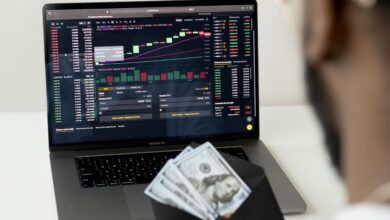Gold in Turmoil: The Impact of Geopolitical Tensions on Demand and Pricing

In an increasingly interconnected world, geopolitical tensions have become a significant driver of financial markets, with gold emerging as a crucial barometer of investor sentiment. As nations grapple with conflicts, trade disputes, and diplomatic rifts, the allure of gold as a safe-haven asset often intensifies. This article delves into the complex relationship between geopolitical turmoil and gold demand, exploring how uncertainty in global affairs can lead to fluctuations in gold prices. We will begin by examining the intrinsic appeal of gold during times of crisis, shedding light on its enduring reputation as a refuge for wealth. Next, we will analyze market dynamics, illustrating how sudden conflicts or diplomatic breakthroughs can trigger immediate reactions in the gold market. Finally, by reflecting on historical perspectives, we will uncover valuable lessons from past geopolitical crises that continue to shape the demand for gold today. Join us as we navigate this intricate landscape and uncover the profound impact of geopolitical tensions on one of history's most treasured commodities.
- 1. "The Safe Haven Appeal: Understanding Gold's Role Amidst Geopolitical Uncertainty"
- 2. "Market Reactions: How Conflict and Diplomacy Shape Gold Prices"
- 3. "Historical Perspectives: Lessons from Past Geopolitical Crises on Gold Demand"
1. "The Safe Haven Appeal: Understanding Gold's Role Amidst Geopolitical Uncertainty"
In times of geopolitical uncertainty, investors often seek refuge in assets that have historically maintained their value, and gold stands out as a premier safe haven. The allure of gold during crises is rooted in its intrinsic qualities: it is a tangible asset, universally recognized, and has been used as a store of value for millennia. When political tensions escalate—whether through conflicts, trade disputes, or economic sanctions—market participants tend to flock to gold, driving up its demand and, consequently, its price.
The psychological aspect of gold as a safe haven cannot be understated. During periods of heightened uncertainty, such as military conflicts or significant political upheaval, investor sentiment often shifts from risk-on to risk-off. This shift is characterized by a marked increase in demand for gold, as investors prioritize the preservation of wealth over potential returns. Historical data reveals that gold prices typically surge during crises; for instance, during the financial turmoil resulting from the 2008 global recession and the geopolitical tensions surrounding Russia's annexation of Crimea in 2014, gold prices experienced significant spikes.
Moreover, the relationship between gold and geopolitical tensions is exacerbated by the behavior of central banks. In times of instability, central banks may increase their gold reserves as a hedge against currency devaluation and economic instability. This institutional demand further bolsters gold prices, reinforcing its perception as a reliable asset. Additionally, the growing trend of diversification among wealthy investors and institutions, who seek to mitigate risks associated with traditional equities and bonds, also contributes to gold’s appeal during turbulent times.
In conclusion, gold's role as a safe haven during geopolitical uncertainty is a complex interplay of psychological factors, historical precedent, and market dynamics. As tensions flare across the globe, the demand for gold is likely to intensify, reflecting a collective instinct to safeguard wealth in an unpredictable world. As investors navigate the intricacies of global politics, gold remains a steadfast pillar in the ever-evolving landscape of financial security.
2. "Market Reactions: How Conflict and Diplomacy Shape Gold Prices"
Market reactions to geopolitical tensions often manifest in the fluctuations of gold prices, a phenomenon that can be attributed to the metal's status as a safe-haven asset. When conflicts arise—be it military confrontations, trade wars, or diplomatic standoffs—investors typically seek refuge in gold, perceiving it as a hedge against uncertainty. This behavior is rooted in gold's historical role as a store of value, particularly during times of crisis.
For instance, during heightened military tensions or significant political unrest, demand for gold tends to surge. Investors flock to the metal, driving up its price as they attempt to safeguard their wealth from potential market volatility. The 2008 financial crisis serves as a pertinent example; as global economic stability wavered, gold prices soared, reaching historic highs as investors sought protection from economic downturns.
Conversely, periods of diplomatic resolution or de-escalation can lead to a decrease in gold demand. When tensions ease, market sentiment often shifts towards riskier assets like equities, prompting investors to liquidate their gold holdings. This shift can result in a drop in gold prices, reflecting a collective optimism about stability and growth. For instance, when trade negotiations between major economies yield positive outcomes, gold prices can experience downward pressure as confidence in economic recovery strengthens.
Moreover, the response of central banks and governments to geopolitical tensions can further influence gold prices. Central banks often adjust their monetary policies in reaction to conflicts or economic uncertainty, which can have a direct impact on inflation rates and currency values. For example, if a central bank signals a willingness to lower interest rates to stimulate the economy during a geopolitical crisis, this can lead to increased gold demand as investors anticipate a weakening currency.
In summary, the interplay between conflict and diplomacy creates a dynamic environment that significantly shapes gold prices. As investors continuously assess geopolitical developments, their reactions can lead to rapid fluctuations in demand, thereby influencing the market value of gold. Understanding this relationship is crucial for investors looking to navigate the complexities of the global economy, particularly in an era marked by persistent geopolitical challenges.
3. "Historical Perspectives: Lessons from Past Geopolitical Crises on Gold Demand"
Throughout history, gold has been viewed as a safe haven during times of geopolitical turmoil. Its intrinsic value and historical significance as a store of wealth have made it an attractive asset for investors seeking stability amidst uncertainty. Examining past geopolitical crises reveals important lessons about how these events influence gold demand and prices.
One notable example is the Cold War era, particularly during the Cuban Missile Crisis in 1962. As tensions escalated between the United States and the Soviet Union, investors flocked to gold, driving its price upward. The fear of nuclear conflict and the instability of global politics prompted a surge in demand as individuals and nations sought to protect their wealth from potential economic fallout.
Similarly, the Gulf War in the early 1990s had a profound impact on gold prices. As Iraq invaded Kuwait, the ensuing military conflict and the potential for broader regional instability led to heightened demand for gold. Investors turned to the metal as a hedge against the uncertainty of war and its economic ramifications. In this case, gold prices spiked, reflecting not only the immediate concerns surrounding the conflict but also the long-term implications for global oil markets and economic stability.
More recently, the 2008 financial crisis, which was influenced by geopolitical factors such as the wars in Iraq and Afghanistan, saw a dramatic increase in gold demand. As the economic landscape faltered, investors sought refuge in gold, leading to record-high prices. The crisis underscored gold's role as a counter-cyclical asset when traditional markets faltered, reinforcing its status as a reliable store of value during periods of instability.
These historical perspectives highlight a consistent pattern: geopolitical tensions often catalyze increased demand for gold as a protective measure against uncertainty. Investors tend to gravitate toward assets perceived as stable, and gold's unique qualities allow it to maintain its allure even amidst fluctuating market conditions. As we reflect on these past crises, it becomes evident that geopolitical events continue to shape investor behavior and sentiment towards gold, making it a critical consideration for those navigating the complexities of the modern economic landscape.





